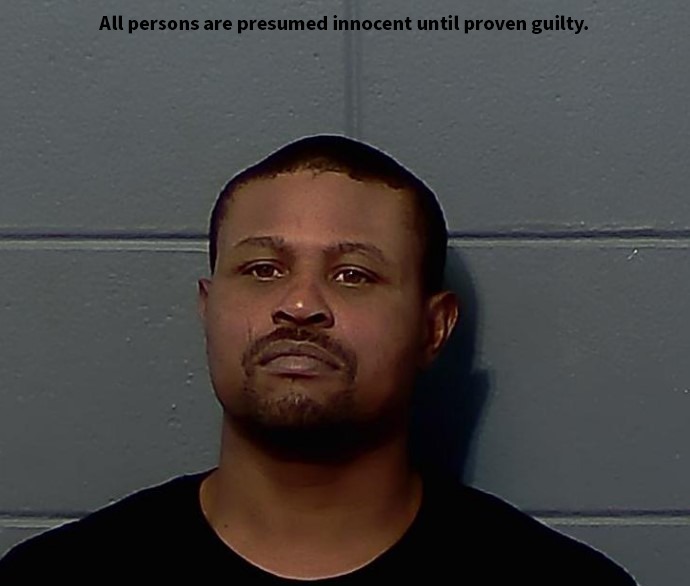Healing patients at Twin Oaks
Published 12:00 am Saturday, June 30, 2001
AMY SZPARA
PHOTO 1: Alberta Johnson, a resident at Twin Oaks Nursing Home, receives her daily wound assesment from woundcare specialist Carolyn Morris. Johnson is one of the patients Johnson has treated since she began woundcare nursing. (Staff Photo by Amy Szpara) Nighttime news specials have featured the negative side of nursing homes quite a bit, focusing on substandard conditions and lack of adequate care from staff. But the positive work done and the homes that work hard to combat the poor opinion many have of such places are seldom brought to the public’s attention. Carolyn Morris is a nurse that has spent almost 22 years working in a nursing home, and she loves her job and the residents that she cares for. Just recently transitioned from a regular nursing staff member at Twin Oaks Nursing Home in LaPlace to a woundcare treatment specialist there, Morris has fallen even more in love with her job. “I love it,” Morris said. “You can see a lot of progress in your work, watching the patients heal. I like working with the elderly, and sometimes it seems like healing a wound will be impossible, but you eventually see it work. You’re actually helping them heal.” PHOTO 2: Theresa Haydel, a resident at Twin Oaks Nursing Home who has not yet needed woundcare treatment, gets a skin assesment from Carolyn Morris. Everyone at the home receives an assesment periodically. (Staff Photo by Amy Szpara) Around 10 a.m. every morning, Morris makes her rounds, starting with checking her woundcare book to see if any new patients with wounds have been listed. “I try to catch the residents who do get up for lunch or who are more mobile first, then I move on to the less mobile residents. I check them for rashes, skin tears and treat existing wounds,” she said. Morris also conducts a skin assessment test on each of the residents at Twin Oaks to make sure there are no pressure areas, reddened areas on the skin that could turn into pressure ulcers, bed sores. She checks them from head to toe for pressure areas. “Any nursing home has several different types of wounds that they have to deal with. One major concern is pressure ulcers that come from lying in bed for too long,” said Timothy Gast, director at Twin Oaks. He added that immobile patients must be turned every two hours to prevent such a wound from starting. They try to get the immobile patients up and in wheelchairs moving around as often as possible to help their circulation. “Since she (Morris) has been our nurse, the rate of wounds has dropped significantly,” said Gast. The most typical wound found in nursing homes, pressure ulcers, can be very scary to patients and can lead to serious infection if not treated. Stage one, a reddened area, suggests that a patient has poor circulation to that area and has been on it for too long. Stage two is when the skin is actually broken, and stage three is when the wound is down into the dermis causing tissue loss. Stage four, the most critical, can be a wound that goes right down to the bone. Gast said the wound starts from the inside and works its way to the outside, which is what makes it so serious. Sometimes a stage four wound can take weeks to months to heal. That is why Morris is so important to Twin Oaks. She keeps the wounds from developing into serious problems for patients. “She is a very strong-willed person. She cares deeply about the people here. We needed someone who could work independently and not need a lot of direction. She has been exactly what we needed,” said Gast. “There are so few wounds right now because of Carolyn.” Morris also treats patients who have wounds from falling down or skin tears, also things that happen when people have trouble getting around. Morris, when she begins working with a patient, assesses the wound. She measures it daily to see if it is getting smaller and checks to see if it is getting worse. Stage one treatment includes applying a skin barrier that has to be massaged into the area. A stage two wound is cleaned with saline solution and is treated with antibiotics until it heals. Stages three and four require a physician’s analysis, saline treatment, zinc ointments and sometimes dressings. “Your biggest concern with a wound like that is to check and treat it once or twice a day. Keep the patient off of the area. Keep them on a high protein diet and give them vitamin supplements,” said Morris. She said nutrition is very important for healing, and it is sometimes hard to get those who are feeling poorly to eat properly. One of Morris’ patients, Alberta Johnson, lights up when her nurse walks into the room. “Alberta’s my favorite little patient,” said Morris. “She does it well,” said Johnson. “If I need a doctor, she will get him right away. She’s been treating me for a year or so.” Johnson was first admitted to Twin Oaks with wounds, and Morris has been taking care of her ever since. “I’m healing good. She’s the best nurse they got in here,” said Johnson. “I like doing this,” Morris added. “It really gives me a good feeling that I’m healing my residents and they are getting relief. I assure them when they are scared that I’m going to take good care of them. They get scared. I pray with my patients. I feel good helping them.” Morris said she loves working with geriatric patients. “I have a special feeling for them. I really get attached.”





